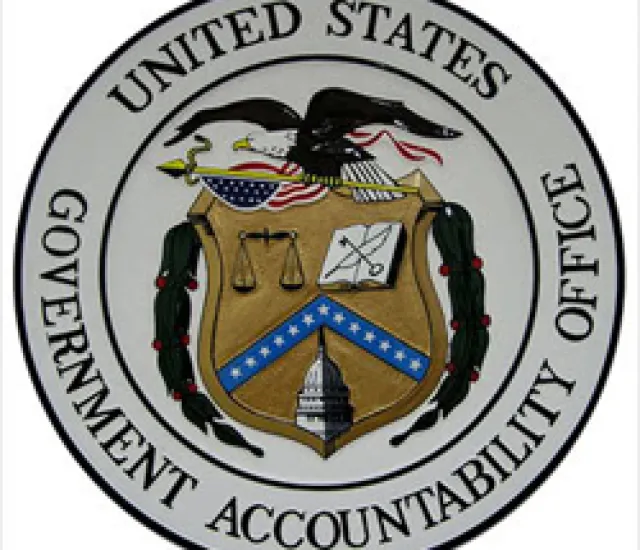It is no secret that a growing number of pension funds are investing in hedge funds and other alternative investments.
However, a new study conducted by the U.S. Government Accountability Office (GAO) warns that hedge fund and private equity investments pose a number of risks and challenges for pension plans. Although many of these risks are well understood by people who operate within the alternatives industry, the government agency asserts that many pension funds are having a difficult time dealing with them.
“According to plan officials, regulators, and others, some pension plans — especially smaller plans — may find it particularly difficult to address the various demands of hedge fund investing,” the GAO stresses in its report. For example, it points out that many medium-size and small plans may not have the expertise to oversee the trading and investment practices of hedge funds, while some plans may be unable to conduct the necessary due diligence and monitoring of hedge fund investments.
“Smaller plans may have only one- or two-person staffs, or may lack the resources to hire outside consulting expertise and may be locked out of top-performing funds,” the GAO notes in its report. “To a lesser extent, some larger plans may also lack sufficient expertise.”
It points out, for example, that a representative of one pension plan with more than $32 billion in total assets noted that before investing in hedge funds, the plan would have to build up its staff to conduct the due diligence necessary during the fund selection process.
According to a GAO analysis of 2001–’10 annual survey data, the share of defined benefit pension plans with investments in hedge funds grew from 11 percent in 2001 to 60 percent in 2010. Over the same period investments by large plans in private equity increased from 71 percent in 2001 to 92 percent in 2010.
Keep in mind that these funds are not exactly rolling the dice with alternatives. According to the GAO, the average allocation of plan assets to hedge funds was slightly more than 5 percent, and the average allocation to private equity was a little more than 9 percent.
The GAO report also points out that 20 of the 78 large plans that reported hedge fund investments in 2010 had allocations of 10 percent or more. The highest reported hedge fund allocation was 33 percent of total assets. In addition, 34 of the 121 plans that reported private equity investments in 2010 had allocations of 10 percent or more; the highest reported private equity allocation was 30 percent.
According to the GAO report, a 2010 survey by Greenwich Associates found that 22 percent of midsize plans — those with $250 million to $500 million in total assets — were invested in hedge funds, compared with 40 percent of the largest plans: those with more than $5 billion in assets. It notes that there is no data available regarding plans with less than $200 million in assets.
This surge in the number of pension plans investing in these alternative investments led the GAO to warn about a number of risks and challenges not shared by traditional investments.
For example, the agency emphasizes investors in hedge funds and private equity may face uncertainty about the precise valuations of their investments. It notes that some hedge funds invest in thinly traded assets whose valuation can be complex, subjective and difficult.
Also, a number of hedge funds and private equity funds use a fair amount of leverage, which can magnify profits but can also result in greater losses if the market goes against the fund’s expectations.
And, of course, alternatives are illiquid and therefore cannot be redeemed on demand.
“Finally,” the GAO warns, “investing in hedge funds can pose operational risks — that is, the risk of investment loss from inadequate or failed internal processes, people, and systems, or problems with external service providers rather than an unsuccessful investment strategy.”
The GAO does acknowledge that plan sponsors have ways of dealing with these kinds of challenges. For example, the investors may try to negotiate fee structures and valuation procedures, as well as the degree of leverage employed. “Also, plans address various concerns through due diligence and monitoring, such as careful review of investment, valuation, and risk management processes,” the agency adds.
The GAO points out that the Department of Labor has a role in helping to ensure that private plans fulfill their fiduciary duties; this includes educating employers and service providers about their fiduciary responsibilities under ERISA. “According to plan officials, state and federal regulators, and others, some pension plans, such as smaller plans, may have particular difficulties in addressing the various demands of hedge fund and private equity investing,” the GAO says.
The report notes that in 2008, GAO recommended that the DoL provide guidance on the challenges of investing in hedge funds and private equity and the steps plans should take to address them. However, although the DoL generally agreed with the recommendation, it has yet to take action, the GAO laments. “The agency explained that the lack of uniformity among these investments could complicate the development of comprehensive guidance for plan fiduciaries,” it adds.
Another agency that has a keen interest in pension funds fully understanding the risks and challenges of alternatives is the Pension Benefit Guaranty Corp., which guarantees defined benefit plans, up to a limit. After all, it is on the hook to pay off pensions if a pension plan fails.







